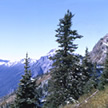| Report Documents
|
|
|
| |
| Map Plotfiles
|
-
No files of this type available
|
| |
| Data Files
|
-
No files of this type available
|
| |
| Digital Map Files
|
-
No files of this type available
|
| |
| Image Document
|
-
No files of this type available
|
| |
| Video Files
|
-
No files of this type available
|
| |
|
All Documents
|
|
|
| Contact
|
|
-
If you have any questions on the information presented, or require additional report data or attachments, please contact the Report Contact
|
|
|
Roosevelt elk habitat capability and suitability models for Living in Winter and Growing
Season Forage life requisites were completed for the South Coast Region as an expansion of
a 3-year habitat model development project in the adjacent Strathcona TSA. Consistent
habitat ratings assumptions and logic were applied across both regions after extensive
review by species experts.
|
Author: MADRONE ENVIRONMENTAL SERVICES
|
Old Reference Number: 16.W.COM.02
|
Old Reference System: FWCP FIsh Wildlife Compensation Program Coastal
|
Date Published: Mar 2016
|
Report ID: 51644
|
Audience: Government and Public
|
Madrone Environmental Services Ltd., (Madrone) was awarded funding through the Fish
and Wildlife Compensation Program (FWCP) to develop a Roosevelt elk habitat
capability/suitability model for the South Coast region of British Columbia, prioritizing the
Clowhom watershed and adjacent areas of the Sunshine Coast TSA. A secondary goal was to
complete this mapping for all BC Hydro watersheds within the South Coast region for which
ecosystem mapping exists, including the Stave, Coquitlam and Cheakamus watersheds. The
development of habitat models supported recommended actions in numerous FWCP Action
Plans related to habitat enhancement, critical habitat mapping, and riparian forest
conservation for Roosevelt Elk (summarized in Table 1).
Terrestrial ecosystem data was compiled and collated for the project area, and populated
with forest age, structural stage, slope/aspect modifiers, snowpack zone and solar radiation
information to form an Operational Data geodatabase to be used for Roosevelt elk habitat
capability/suitability models for Living in Winter and Growing Season Forage.
Roosevelt elk habitat capability and suitability models for Living in Winter and Growing
Season Forage life requisites were completed for the South Coast Region as an expansion of
a 3-year habitat model development project in the adjacent Strathcona TSA. Consistent
habitat ratings assumptions and logic were applied across both regions after extensive
review by species experts. South Coast habitat models provided 519,863 ha of total
coverage, equivalent to approximately 23% of the total project area (Figure 1). The area of
model coverage was limited by the availability of Terrestrial Ecosystem Mapping (TEM).
Complete model coverage has been mapped for the Clowhom watershed, a high priority
area for FWCP (Figures 2-5).
The habitat model and map products developed in this project provide a sound basis for
habitat enhancement and conservation in FWCP watersheds. Populations of Roosevelt elk
can be limited by the availability of high quality winter range, and opportunities for
protection of high quality winter range can be identified from suitability maps (e.g., in the
upper Clowhom watershed, Fig. 3). Capability maps identify candidate areas for
enhancement (Fig. 2). Furthermore, the habitat ratings developed for each ecosystem unit
in this project can be applied to new TEM is completed in future. The seamless ecosystem
map coverage for areas with ecosystem mapping (TEM) produced for this model can also be used as the basis for wildlife habitat ratings projects for other FWCP priority species on the
South Coast (e.g., Western Screech-owl, Grizzly Bear, Mountain Goat).
The complete logic and assumptions used to rate habitat values for Roosevelt elk are
described in Appendix 1. Description of the development of the Operational Data is found in
Appendix 2, with a detailed description of the snowpack zone and solar radiation models in
Appendix 3. Finally, Appendix 4 provides a description of Python scripts used to develop and
populate information in the WHR models.
The Roosevelt elk habitat models completed for the South Coast project area have not
undergone extensive validation by local experts, and this step is strongly recommended to
improve confidence in model outputs for use in strategic decision-making.
|
Report Type
Subject
| |
Mammals - Elk: Cervus elaphus |
| |
Region - Lower Mainland |
| |
Terrestrial Information - Habitat Modeling |
| |
|
|
